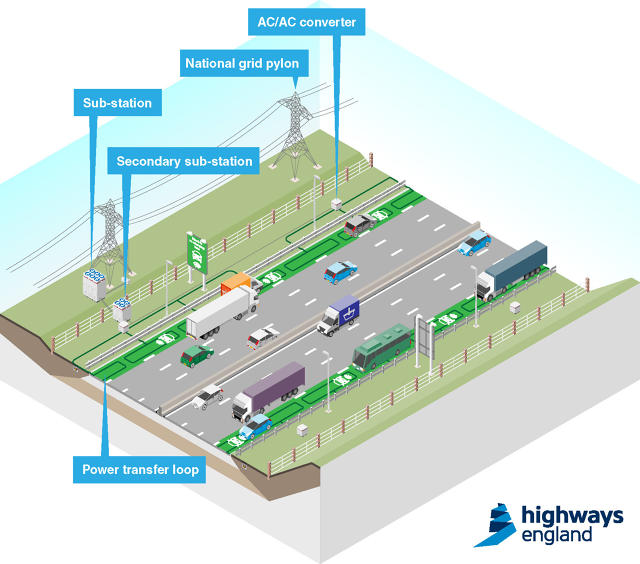 |
| Reviews and Templates for Expression We |
The U.K. Is Testing Electric Highways That Would Charge Your EV As You Drive
This could solve the charging problem that has been slowing electric car adoption for years (if it works).
Brits are getting into electric cars more and more. Sales jumped up 366% in the first quarter of 2015. Still, when the U.K. government surveyed consumers and businesses, they found the chicken-and-egg problem that haunts EVs elsewhere. Some consumers don't want to buy an electric car without a full infrastructure for charging in place. But the business case for building that infrastructure is weak without more EV drivers on roads.
The U.K. plans to add plug-in chargers every 20 miles along highways, so drivers don't have to worry about getting stranded on a road trip. And the country does already have thousands of chargers in place. But now they're testing out something new to make driving an EV even easier: Electric highways that can wirelessly charge cars as they drive.
If the tests go well, the new highways would add to the existing network of plug-in chargers, and make it even simpler to fuel up a Tesla than a standard gas-guzzling car. "This has the benefit of saving time and improving the distance that electric vehicles can travel," says Nic Brunetti, a spokesman for Highways England. "The combination of both types of charging technologies could help to create a comprehensive ecosystem for electric vehicles."

In a feasibility study, the government found that people would be more likely to drive electric cars if the wired roads were in place, especially if the charging networks spread off highways onto regular roads. And it's also a way of responding to a shift that's already happening.
"An important part of managing the road network over the next thirty years will be preparing the infrastructure for a shift to new types of vehicles and technology," Brunetti says. "We need to plan intelligently for the future. Innovative technologies offer opportunities to make the best use of road capacity and to improve the road user experience."
The system would use electric cables installed under roads to generate electromagnetic fields and send power to a gadget under a car. While it could potentially run on renewable energy (and maybe even be combined with something like a Solar Roadway), the government is still working out the details.
"We’re at a very early stage of researching and developing a system that could potentially transfer power to vehicles," says Brunetti. "We won’t know until such time as we have completed off-road trials to ascertain what technology could be used for this and whether or not it is effective."
The first trials, set for later this year, will use a section of fake highway to test out the technology. After 18 months of testing, they'll decide whether to scale it up. If they do, they actually won't be the first: South Korea already has a 15-mile stretch of electric highway in the city of Gumi.
|
|
|
|
Copyright 2011 Energy and Technical Services Ltd. All Rights Reserved. Energyts.com |